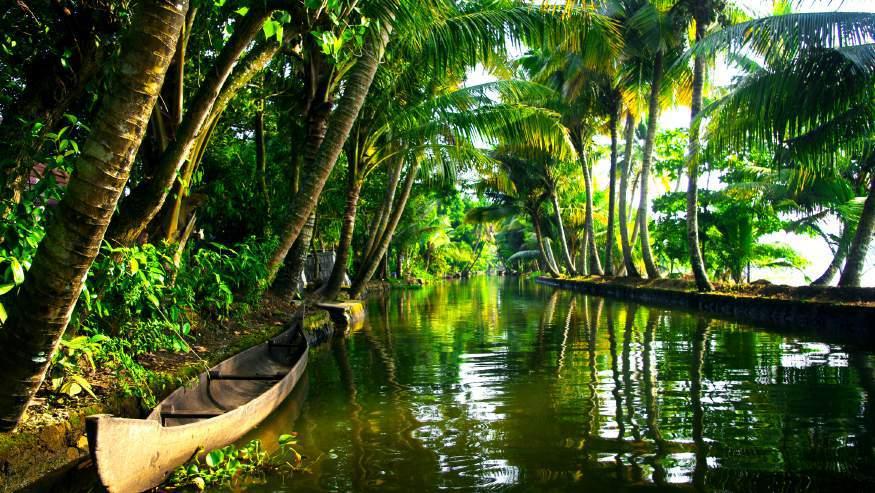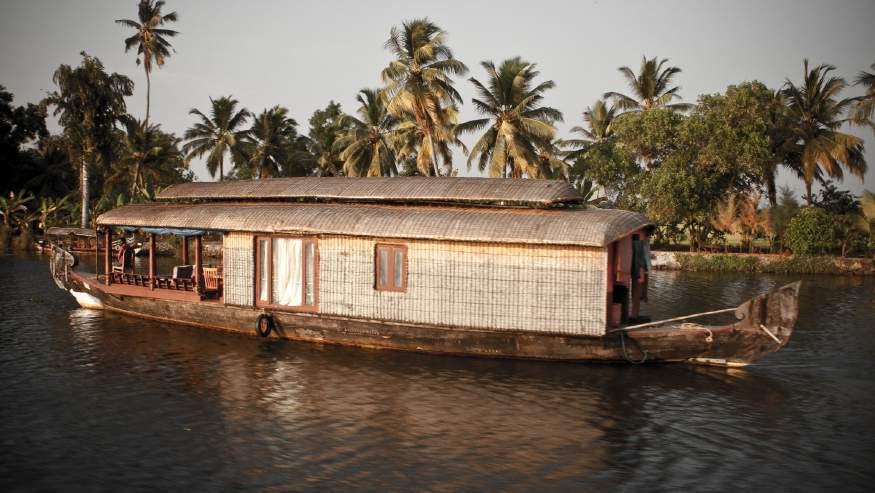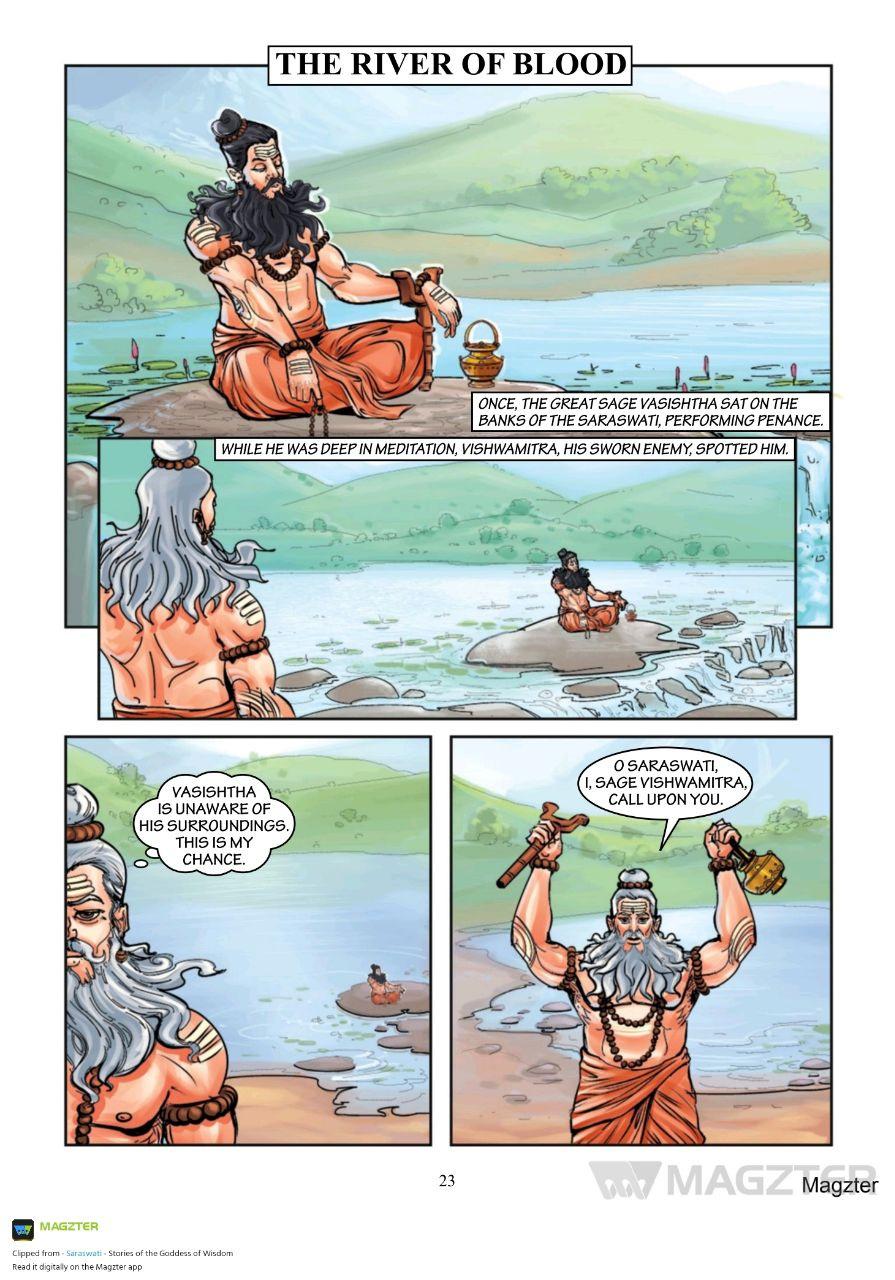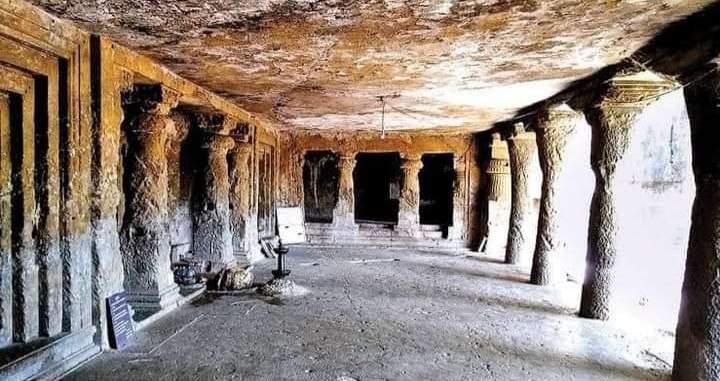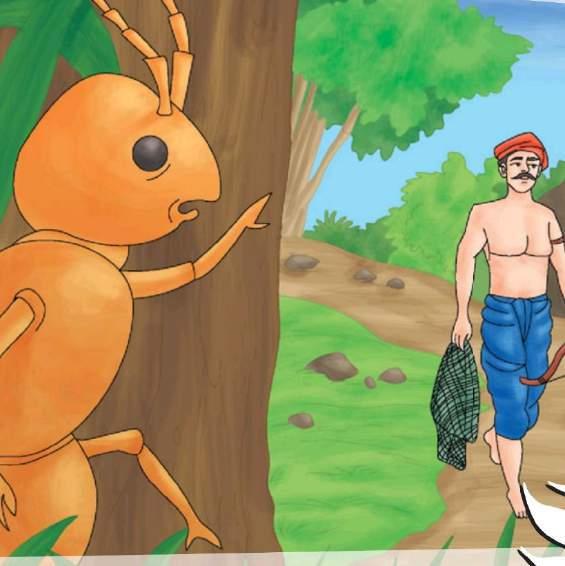Monthly Ma
Volume 05
January 2022


Picturistic Landscape Kerala, India 05



WHY MARGAZHI MONTH IS AUSPICIOUS UNDERSTANDING THE SCIENCE BEHIND ANCIENT HINDU CALENDAR
The auspicious month of Margasheersha, also known as Margazhi in Tamil, has started from 16 December. Margasheersha is considered auspicious for putting efforts into one’s own spiritual growth - be it Sadhana, Vrata, Bhajan or Pooja - for the Upasakas of Shiva, Shakti, Vishnu as well as others.

THE RISE OF THE PRODIGY, M.L. VASANTHAKUMARI
M.L. . Vasanthakumari (19281990) redefined the way Carnatic music was presented. MS, DKP and MLV — they formed a triumvirate.

A TO Z INDIA magazine covers the Indian through his art, culture, lifestyle, religion, etc. This magazine gives an insight into the life of Indians from an angle uncovered by others. Turn to find out what it is about and to immerse yourself into an entirely different culture.
Publication Team: EDITOR: Indira Srivatsa
ASSOCIATE EDITOR: Dwarak, Srivatsa EDITORIAL CONSULTANTS: Santha, Bhavani, Srinivasan
REPORTING: Raghavan PHOTOGRAPHY: Adithyan
GRAPHICS ENGINEER: Chandra
Editorial Office: E002, Premier Grihalakshmi Apartments, Elango Nagar South, Virugambakkam, Chennai - 600092, Tamil Nadu, India.
Communication Details: MOBILE: +91-7550160116 e.mail id: editor.indira@gmail.com
Disclaimer:
A TO Z INDIA Magazine has made a constant care to make sure that content is accurate on the date of publication. The views expressed in the articles reflect the author(s) opinions.

From the Editor's Desk:
Why Margazhi Month Is Auspicious Understanding The Science Behind Ancient Hindu Calendar
The auspicious month of Margasheersha, also known as Margazhi in Tamil, has started from 16 December.

Margasheersha is considered auspicious for putting efforts into one’s own spiritual growth - be it Sadhana, Vrata, Bhajan or Pooja - for the Upasakas of Shiva, Shakti, Vishnu as well as others.
Margasheersha is named after the Mrigshira Nakshatra - the time when the full moon appears closest to the Orion constellation. The name can itself be taken to mean 'the one that leads us to the right path'.
In Bhagvadgeeta, Sri Krishna says: मासाना
that is, among the months, Srikrishna is the Margasheersha, indicating that he himself puts the Bhakta on the path towards the divine.
Several festivals fall in this month. On the Shukla Ekadashi (the 11th day of the waxing moon phase) Gita Jayanti is celebrated. Mokshada (the giver of Moksha) Ekadashi or Vaikuntha Ekadasi falls in this month.
The Krishna Paksha Ashtami (eighth day of the waning moon phase) is celebrated as the Kalabhairava Ashtami, the day when Shiva manifested himself as Kalabhairava.
Thiruvathira or Arudhra Darisanam is also celebrated in this month with grandeur in the states of Tamil Nadu and Kerala. In this festival, the cosmic dance of Shiva as Nataraja - representing the continuous cycle of creation and destruction - is celebrated.
Dattatreya Jayani occurs on Poornima (full moon day) of the Margashirsha, and Katyayani Vrata that the Gopis carried out for Srikrishna also falls in the Margasheesha. The pilgrimage to holy shrine of Sri Ayyappa in Sabarimala also falls in this month.
Picturistic Landscape:
Kerala, India
Nitin
SharmaKerala, located on the south-western tip of India, enjoys unique geographical features that have made it one of the most sought-after tourist destinations in Asia. Fondly referred to as ‘God’s Own Country’, Kerala was selected by the National Geographic Traveller as one of the 50 destinations of a lifetime and one of the thirteen paradises in the world.
An equable climate, serene beaches, tranquil stretches of backwaters, lush hill stations and exotic wildlife are the major attractions of this land. A unique advantage of Kerala is that most of the destinations here are only a two - four hour drive from the other.
Classical art forms, colourful festivals, exotic cuisine are some of the cultural marvels that await travellers. Ayurveda, the ancient Indian system of medicine and Panchakarma, the rejuvenation therapy in Ayurveda have also helped Kerala to gain a pan-global reputation as a worth-visit destination.
Season never ends in Kerala, thanks to the year-long moderate climate and numerous festivals and events.





The evergreen M.L. Vasanthakumari
Chandra. B
M.L. Vasanthakumari (1928-1990) redefined the way Carnatic music was presented. MS, DKP and MLV — they formed a triumvirate. But MLV’s penchant for innovation made her a class apart. A disciple of legend G.N. Balasubramaniam, she followed his quicksilver style of rendition but brought to it her own charm and individuality creating a whole new bani. Madras Lalithangi Vasanthakumari was a prodigy, giving a public performance when she was all of 13. Trained by mother Lalithangi, an accomplished vocalist, Vasanthi accompanied her mother in concerts from the age of 11. Her father Koothanur Ayyasamy Iyer was a musician too. MLV stepped in to present a concert in Bangalore when her mother had to withdraw on health grounds.
There was no looking back, as MLV grew in stature, her vidwat gaining a kind of depth that left the lay and the connoisseur mesmerised. Her RTPs, in particular, were something special. Her adventurous spirit made her launch into delineations of rare ragas, her imagination soaring high, leaving the accompanists searching for answers. Audience flocked to listen to her Devarnamas and Dasar kritis. She was heard in every home during Margazhi through Tiruppavai, which she sang, set to tune by Ariyakkudi Ramanuja Iyengar. Stalwarts, including Ustads, bowed to her genius. All who knew her underline the impromptu way in which she steered her concerts.


Sought after across the country and abroad, MLV stood out with her brilliance, which spilled over to films, where she ruled the roost for several decades. MLV’s personal life, however, was not as tuneful but she moved on not letting any of it reflect in her public performances, the trademark smile never leaving her face. Warm and generous, she showered friends with gifts. She was married to ‘Vikatam’ Krishnamurti and the couple had two children Shankar and Srividya. The latter, trained in music and dance, was a renowned film actor.
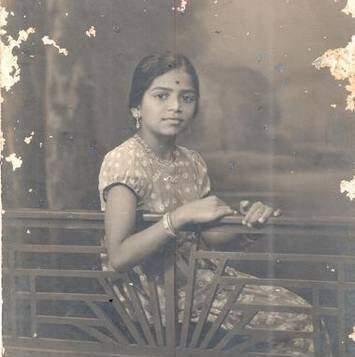
Sabhas feted MLV, who at 49 was the youngest woman to be conferred Sangita Kalanidhi by The Music Academy, Madras. The Central Sangeet Natak Akademi honoured her, Mysore University conferred a doctorate on her and as icing on the cake came Padma Bhushan. MLV passed away on October 31, 1990, her legacy safe in the hands of scores of disciples, some of whom have reached great heights, such as Sudha Ragunathan, Charumathi Ramachandran and A. Kanyakumari.


St.Valluvar’s Concept of ‘Manly Effort’:
email.id: dr.rajvgp@gmail.com
Dr A.Rajamanickam
Manly effort is the physical or mental energy of a human being. It is an attempt to do something when it is difficult to do. The effort includes perseverance with deep involvement.
One should not feel disheartened saying, “This is too difficult for me to do”. Effort will bring the greatness of mind. If one abandons any work unfinished, the world would abandon him. On the contrary, if one strives untiri ngly, he can beat and see the back of fate in retreat. Besides, the good luck of lotus deity, Laxmi, dwells in the persistent efforts of such a man. But, only the goddess of ill-luck (moodevi) resides in one’s laziness. Even though something many not be attained by mercy of God, one’s strenuous effort will pay the wages and reward.
The philanthropy of a man, who does not take effort to labour, will fail like a sword in a eunuch’s hand. But the pride of serving the humanity, will rest in the excellence of one’s efforts. So much so, one who loves hard work with effort, but desires not his pleasure, is a strong pillar to support his friends wiping out their sorrows. It is worth mentioning that physical handicap is not a disgrace to anyone; but to be without efforts and the awareness of what ought to know, is a disgrace indeed.
Effort and labour will bring property; But effortlessness brings only poverty.

The Popular Tradition of Kerala Boat Race:
email id: purushothjune15@gmail.com
Purushoth Appu
It makes you think in awe if heaven has inhabited itself on the earth where one can see huge Mountains, roaring waterfalls, sky touching tall trees, wherever you turn, nature is well prevalent. That is why may be Kerala is called the land of God. Tourism, not only inspires and energises Indians, but also foreigners. And for Photographers, it is a dream come true.. They strive amongst themselves to capture the beautiful moments of Art, Culture and the festivities into their cameras. One such festival is this 'Vellam Kali' Boating Race.
Though boat race happens at various places in India in many districts, this game is special as more groups participate as a team in large numbers. This game is conducted in the state of Kerala in places like Alapuzha Chemmancheri, Pathanamthitta and Aranmula. It gives onlookers goosebumps as the racing stream through the water which gives a feel of a 120 feet python with 100 legs pouncing through the water.
The history of boat race starts around four hundred years ago. In the 17th century, the boat race among the kings brought continuous defeat to King Chembagachery. He approached the carpenter Venkata Narayana of the succeeded kingdom. He told the secret of the m aking of the boat. Small artillery has to be placed and detonated on the edge of the boat to push the boat forcefully forward was the secret. The carpenter Venkat Narayanan was placed under arrest as he had told the secret. He asked the king to permit him to witness the last boat race and the plea was accepted. But the carpenter Venkata Narayan had wrongly exposed the secret and became the reason for t he success was felicitated appropriately. After that during the independence struggle and the security in seaways marked the long history of the boat race. In 1952 the first prime minister of independent India, Jawaharlal Nehru, witnessed the boat race in Punnamadam lake on his arrival to Kerala.
After returning back to Delhi, he couldn't forget the excitement of the boat race dedicated a Golden trophy along with a letter saying that the winning club would get a Golden trophy and prize money every year. From then on to till date the festival is conducted with much fanfare. The Annual Boat Race is a matter of pride and honour for the community. They gear up with great enthusiasm as soon as the announcement is made for the race! There is more than just passion amongst the boat racers who begin working on their fitness to practice for the race. Rowsmen and Anchors who manages the direction of the boat involve in diligent exercising and diet to ensure victory in the race. Each of them desperately wants the trophy and aims with complete dedication performing to the best of each of their potential! The initial 4 kms of the race gets very exciting as all the boats fiercely row at the same pace and it is just the last few milliseconds which decides the victory!
Like Rowers, even boats play an important role in the race. The wood from 'Aanjili' tree is used to make these boats. These trees grow in places like Saanjarapalli, Moonjaar and Thozhupuzha and before the wood is cut down for making boat, certain rituals are followed. Of the enormous 120 feet length of the boat, the back part of the boat alone stands 20 feet tall adding to it's immense stature. As far as the structural design of the boat is concerned, it is made up two designs namely Odichi kuthi and Valachi kuthi and it takes around 6 months to make a boat and costs around 50 lakhs.
The Popular Tradition of Kerala Boat Race:
email id: purushothjune15@gmail.com
Purushoth Appu
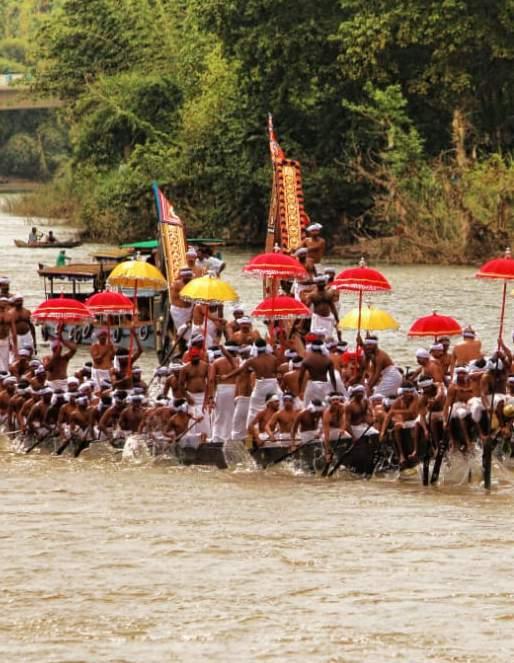
The boat race conducted on the banks of Pamba river in Aranmula, Pathinthitta district is considered to be a traditional festival of Kerala. Its a blissful sight for the audience watching Racers row the boat with traditional symbols wearing white dhothi, turban with decorative umbrella and flags, singing the songs of 8th century enthusiastically adding extra beauty and thrill to the whole scenario.
It is believed that if it rains during the boat race held during Onam festive season, it brings prosperity to that place. Nowadays, in this changing world, there are a number of boating clubs that are competing and they not only participate in the race, but also bring successful competitors from outside the districts to achieve success. Sponsors from big companies, media and promotions make it a big hype and takes the competition to another level.
Although there is a distinct fanbase for boating groups, village level Rowers are still struggling to cope with the ongoing competition, but they do keep up in continuous participation by maintaining their tradition and not giving up the same.
No wonder this Kerala Boating Race is one such festival that all Indians would like to watch at least once in their life time.
Purushoth appu
purushothjune15@gmail.com

The Church of Akbar & Christianity in Mughal India
SanthaAkbar & Christianity in Mughal India:
In the context of Christianity in India, few conversations ever invoke Agra; even fewer invoke the Mughals. Yet, one of the oldest churches on the subcontinent not only belongs to this city but only came about with enthusiastic Mughal patronage. Patronage that was neither political, nor commercial. Instead, it was an honest expression of intrigue, respect, and acceptance of a religion alien to the land. In and of itself, this was a rarity in Mughal India.
This story explores the journey of Agra's lesser-known gem, the Church of Akbar. The Armenians were some of the first to turn Christian, long before Constantine's Council of Nicea mainstreamed the religion in the Roman Empire. India would largely remain untouched by this new theology for centuries at this point. Not that India didn't have Christianity then. Kerala is said to have been introduced to it by one of the early apostles. But it still wasn't known outside of that region. The rest of India, mostly the Gangetic plains, remained unaware of this new cult for a long time. Armenian traders had been visiting India since antiquity. They came via overland routes, such as the Silk Route, through nations li ke Persia, Bactria, and Tibet. One of the earliest accounts of Armenian Christian merchants engaging in commerce with the Indian subcontinent comes from 370 BC. That's when the Athenian soldier-turned-historian Xenophon wrote the first-ever biography of Cyrus the Great, founder of the first Persian empire, the Achaemenid Empire. The work was titled Cyropaedia. Albeit largely fictional, Cyropaedia referenced much of the world around Xenophon and is often seen as a reasonably authentic historical treatise. This text is one of the first to speak of Armenian traders in India. One prominent name in the story of Indo-Armenian relations is Thomas Cana. Traveling overland, this diplomat-cum-merchant not only entered the subcontinent but penetrated as far into the peninsula as the Malabar.
While some accounts call him Armenian, others call him Syrian instead. But that distinction wasn't very prominent during his time. He's said to have led a migration of Mesopotamian Syriac Christians into India some time around the year 750 AD. But these were traders, not preachers or conquerors. They came neither to settle down, not build empires. Nor did they come to evangelize. To them, India was just a pitstop along a longer trade route through Southeast Asia. It was a source of two commodities that fetched them a fortune back home in Europe muslin and spices. Despite centuries of interface with Christian Armenians, northern India remained untouched by Christianity. Even after Islam, a later religion, became commonplace. This changed with Akbar, the first and probably the only, secular Mughal ruler. One could even argue he was the first secular ruler in India, Mughal or otherwise. This goes to not only his tolerance toward his non-Muslim subjects but also a personal interest in and admiration for other theologies. He was the first Muslim ruler to abolish Jizya, a discriminatory tax placed on non-Muslims just for not being Muslim. At one point, he even floated a new syncretic religion of his own drawing from Islam, Sufism, Zoroastrianism, Hinduism, Christianity and even Judaism. He called it Din-i-Ilahi and expected it to be a great unifier. Although the project failed miserably, it speaks volumes on his commitment to secularism and religious harmony. Part of Akbar's realm was the subcontinent's northernmost frontier, Kashmir. Kashmir was also a melting pot of merchants from distant lands who gathered here looking for the most prized of all spices, saffron.
India and it's History:
The Church of Akbar & Christianity in Mughal India
Santha
Akbar made frequent trips there just to soak in the beauty of the mountains. On one such trip, he got acquainted with an Armenian merchant named Jacob. Contemporary accounts spell the name as Hakobjan. The emperor had a fair idea of the Armenians' integrity and their knack for commerce. Cementing ties with this community had the potential of doing immense good to the Mughal economy, as social clout those days led to trade monopolies. And Armenia was the gateway to a world of markets yet to be fully explored. This pragmatic endgame in mind, Akbar extended an invite to the merchant and his son. The invite was to settle in his capital along with fellow countrymen.
The offer was to create a permanent central base in India rather than scattered trading outposts which would help with commerce and integration. There were some Armenian traders in parts of Kashmir and Punjab at the time. Akbar asked Jacob to invite all of them to the imperial city where they'd be given citizenship and royal patronage to practice their religion. The Armenian influx was also in part motivated by the Ottoman and Safavid conquests of the Armenian highlands during the fifteenth century. These invasions, and the religious persecutions that followed, caused many Armenian Christians to flee their homeland for safer havens in places like the Indian subcontinent, especially Kashmir. One could see the Ottoman conquest and the persecution that followed as a precursor to the Armenian genocide at the hands of Turkey that would follow five centuries later. Besides business, Akbar was also genuinely interested in their religion, Christianity. He wished to explore and understand it better, which is why he was so keen on having a permanent Armenian community in his capital. To that end, he even offered them the funds and means to build a church of their own. This was the first for a Mughal. That capital was Agra. Agra, alternatively with Lahore, enjoyed this status for a good 112 years from 1526 through 1638.
By 1562, the city already had a thriving Armenian colony along with an Armenian Church, the first ever in North India. A lot of trade was happening, as was a cultural exchange. Akbar proved to be an excellent patron, and a refreshing secular change from his otherwise theocratic predecessors and successors. Within a couple of years, he did away with jizya as well as the lesser-known pilgrim tax, a Mughal tax on Hindus wishing to visit their holy sites. Akbar's regime was a landmark departure from the Islamic theocracy his dynasty has come to be identified with, courtesy his great-grandson. This patronage wasn't mere tokenism as one might mistakenly conclude. The emperor endeavored to fill quite powerful positions in his court with meritorious Armenian Christians.
Some accounts even claim Mariam-uz-Zamani, one of Akbar's wives and Jahangir's titular mother, was an Armenian Christian. Of course, this bit is far from clear as plenty others claim she was the Rajput princess Jodhabai. Today, Akbar's Church struggles to match the grandeur of its better known neighbor, the Cathedral of the Immaculate Conception. Also the seat of the Archdiocese of Agra, it's a magnificent structure commonly referred to as St. Peter's and known far beyond the confines of the city. Akbar's Church, however, continues to stand its ground as the sole witness to a Muslim emperor's unparalleled respect for Christianity at a time when another part of the same subcontinent was suffering the brutalities of the Inquisition.

Know your India:
The blessed land, Rajasthan, India
Sridhar
In Rajasthan, there is a rich tradition of making chhatris (memorials) in the memory of their ancestors. Jaswant Thada, located in the foothills of Mehrangarh, the historical fort of Jodhpur, revered as the city of Surya, reflects the ancient culture of Rajasthan, which inspires to pay homage to the legendary Rathore Rajputs.
Known as the Taj Mahal of Rajasthan, Jaswant Thada was built by Maharaja Sardar Singh of Jodhpur in the memory of his father, Jaswant Singh Il, in 1899 AD. Undoubtedly, the craft beauty of Jaswant Thada is unmatched, leaving the visitors mesmerized.


Nabanna,
The popular harvest festival of India
KusalNabanna, the harvest festival that falls in the month of Agrahayan (Margasirsa). It is a popular ceremony among the rice growers of WB, Bihar, Tripura, & Assam, & the Bangladeshi Hindus. Devi Lakshmi is worshipped at this time, who stands for wealth & fertility.
According to traditional beliefs, a community cannot enjoy the new rice harvest until devi Lakshmi is first offered the new crop or Nabanna. So the farmers will cut and husk a special variety of rice, and offer it first to the Devi as payesh or paramanno.
In some cases, ancestors and local deities are also offered the payesh cooked with nobanno. Other rituals followed today will include greeting the moon with diyas, distributing gifts and kheer to children, and offering rice and other food to the crows.

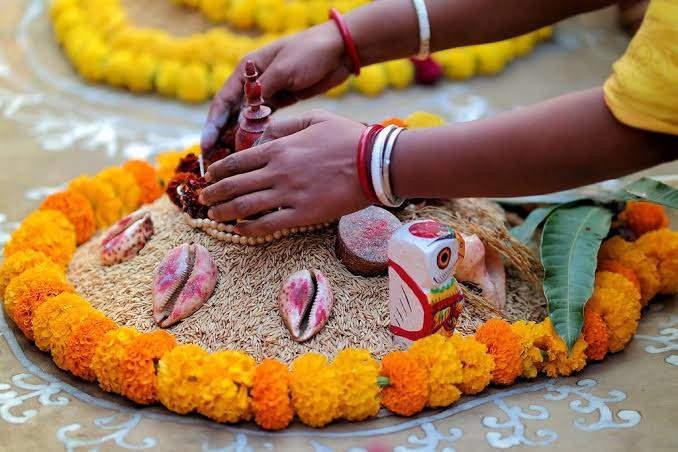

தமிழினியன
ேகாவில மணிகள சாதாரண
உேலாகததில ெசயயபப�வதிலைல.
காடமியம, ஜினக, ெலட, காபபர,
நிககல, கேராமியம மற�ம
மாஙகனஸ ேபானற பல
உேலாகஙகைள ெகாண�
ெசயயபப�பைவ தான மணிகள.
ேகாவில மணிைய ெசயய
ஒவெவா� உேலாகதைதயம
சரியான அளவில கலகக ேவண�ம.
அதன பினனணியில இ�க�ம
விஞஞானம எனனெவன�
ெதரியமா?
மணிைய ஒலிகக ெசயயம ேபா�
ஒவெவா� உேலாக�ம ஒவெவா�
தனித�வமான ஒலியாய எ�பபம.
உஙகள இட� மற�ம வல�

இனைறய
�னேனாரகள. உ�கவாகனம, பயிறெசயயவாகனம, பயணிகக வாகனம,
விடவிலைல. நாம கண� பி�தத
ெசயறைக உரம �மிைய விடமாககிய�. பயிரகள, பழஙகள, காயகறிகள, எலலாவறைறயம கலபபினம ெசயேதாம. அைத உணேடாம. விலங�கள,
எலலாவறைறயம நாசமாககி
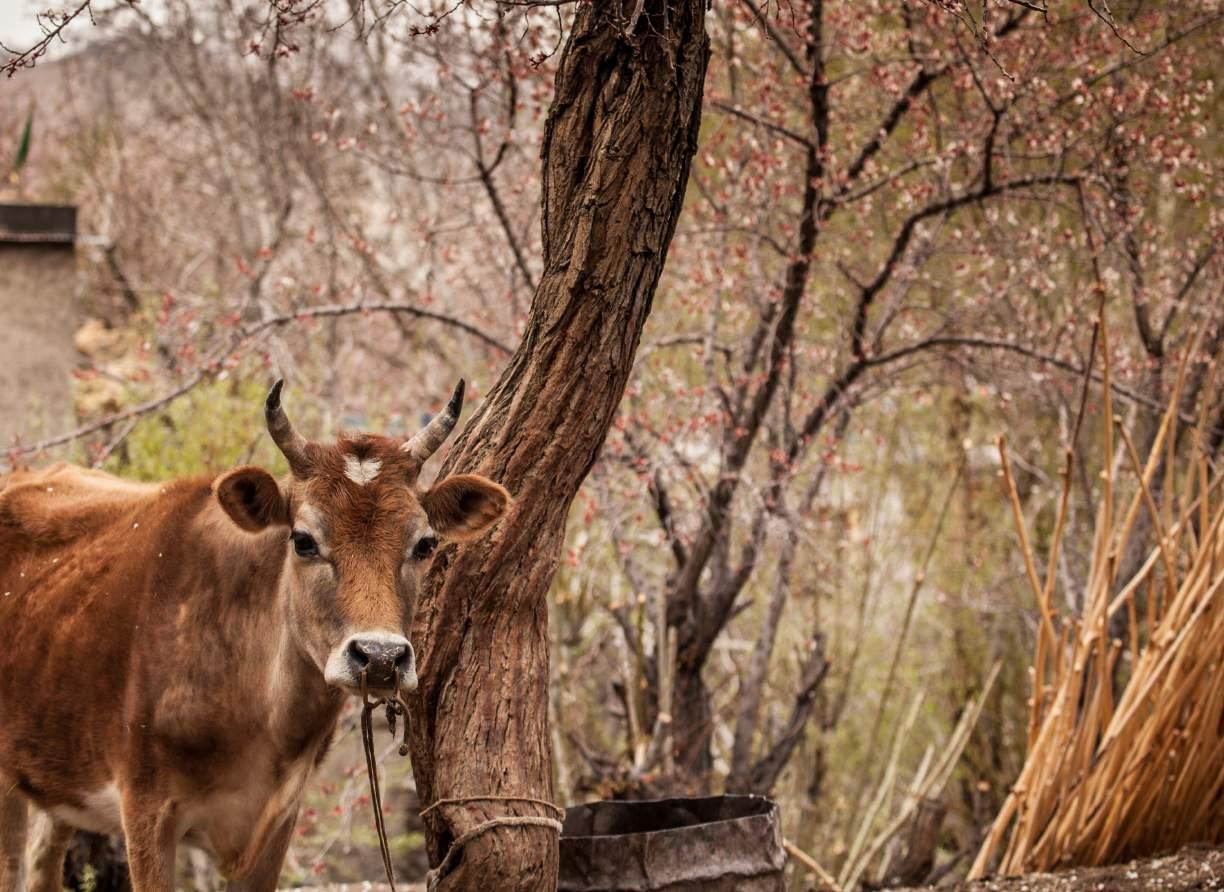

விதிைய மறி,
நியாயமா?
யாம �ைஜ ��நதபின,
திைரயிட

�ைஜ, பால, பால
தாம�லம சமரபபிககபப�ம.
ெசன�, ெபாரி ைநேவதயம
எ�ககேவண�ம. அதனபின எலலா சனனிதிகைளயம திறககேவண�ம.
Meruvardhanaswami temple at Pandrethan near Srinagar
Mid 10-th Century Shiva
Temple
Dwarak
Photograph of the Meruvardhanaswami temple at Pandrethan near Srinagar in Jammu and Kashmir, in Badami Bagh Cantonment.
Pandrethan, now mostly in ruins, is one of Kashmir's historic capitals, as recorded by Kalhana in his Rajatarangini, to have been founded by king Pravarsena in the 6th century CE. Its name is derived from Puranadishthana or ‘old town’.

This small stone Shiva temple in the picture dates from the mid-10th century, was built by a minister named Meru. It was set in a spring-fed tank and its plinth is now submerged. Its interior has one of the finest surviving temple ceilings in Kashmir, consisting of three intersecting squares formed by diagonally placed lintels, the soffit decorated with a lotus. The stone ceiling is elaborately carved in basrelief figures, and it is one of the most perfect pieces of ancient carving that exists in Kashmir. The pyramidal roof as evident in the image is divided into two portions by an ornamental band.



The Shiva Tribe and it's story:
The true facts about Nandi
Indira Srivatsa'Loyalty’ is a term that is both a positive and a difficult one at the same time. Positive because it makes loyal persons loved by people and, difficult because always maintaining loyalty in various situations can be a real challenge for them. But it is possible to overcome any situation if a person has loyalty along with ultimate devotion, love and fondness for another. The character with all these aspects reminds us of Nandi, known as the vehicle of Lord Shiva.
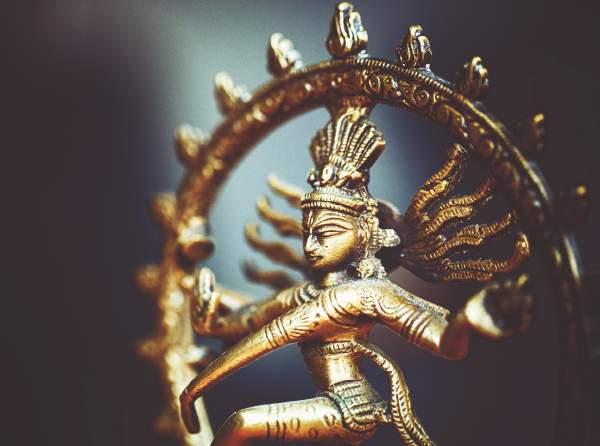
Yes, it is true that Nandi is the vehicle of Lord Shiva and is also known as the gatekeeper of Kailash, but this is not the only definition by which the Nandi should be remembered. The way he devoted his life in serving Lord Shiva and his family, he has taken the place of the most trusted, faithful and dedicated personality in Hindu scriptures. Nandi is connected to Shiva by his birth. It was Shiva who was pleased with the years of prayer by sage Shilada and blessed him with Nandi as his son. Shilada found a boy Nandi while plowing the fields.

He was very happy in his life with Nandi until the two sages came to visit them and said that Nandi would only live for one year more. Aware of the fact that Henwas in this world because of Shiva and being always devoted to him, Nandi knew that if there was someone who could change his fate, it was only Lord Shiva.
Nandi knew that the pure faith and devotion can make anything possible and can be the ultimate way to get close to Lord Shiva. He didn't want to live a life without Lord Shiva. So when Shiva appeared before Nandi and asked what he wanted, Nandi asked if he could always serve Shiva. After seeing the most beautiful person in front of him, Nandi knew that he didnt want anything except for the opportunity to serve Shiva. It was Shiva who created Nandi. So he knew the desires of Nandi and also what he could do to keep his loyalty intact. Shiva blessed him with a garland and made him his vehicle and the protector of Kailash. Shiva also declared him to be the chief of the Ganas.!
Om Namo Nandishwaraya Namah ~ Shivaya Namah
Om ~ Namaste Divine Souls!



Incredible India: mages of India hrough Visuals





Incredible India: mages of India hrough Visuals
